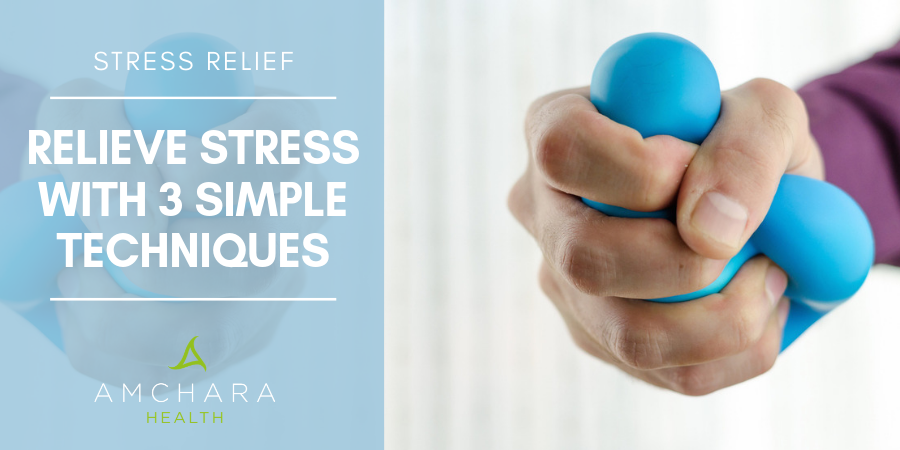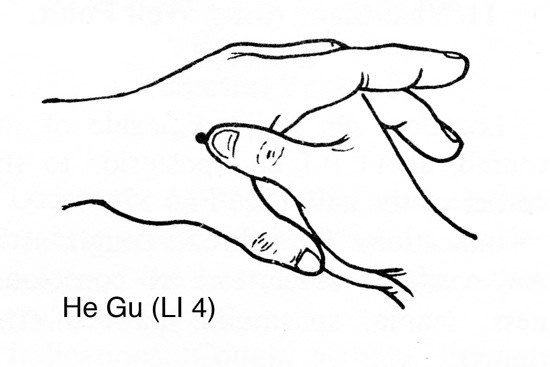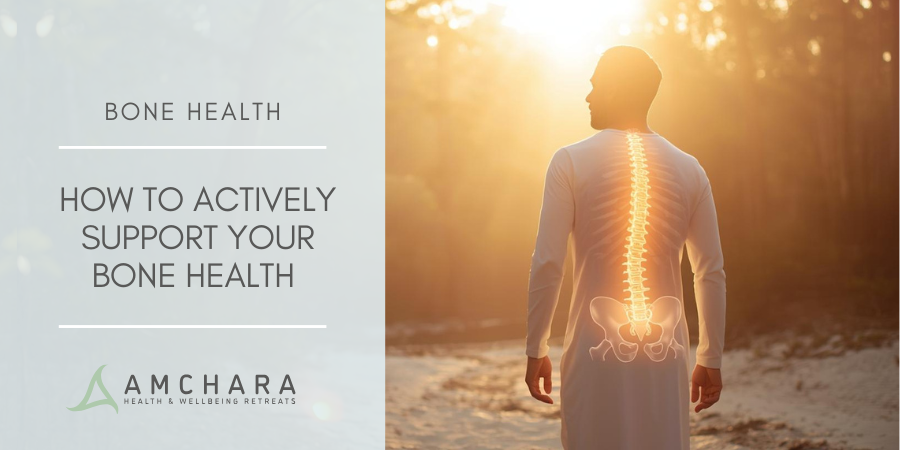The human body and brain are faced with numerous challenges on a daily basis – psychological, physical or environmental – and the stress response helps the body to adapt.
Our modern, fast paced, demanding and competitive world means that there is an overwhelming amount of stimulation for the nervous system to deal with – so more and more people are succumbing to the effects of stress.
Acute stress is a helpful response that keeps us from danger, but long term stress causes problems.
Chronic stress results in symptoms such as anxiety, depression, fatigue, headaches and digestive disturbances and has been linked to an increase in the risk of developing cardiovascular disease (1), inflammation (2) and poor gut health (3).
Tackling stress can be difficult and often symptoms like fatigue, mood disturbances and anxiety can impact the ability to make positive changes.
Our mission is to provide you with both insightful information and evidence-based content, all orientated towards the Personalised Health approach, with actionable knowledge and tips to help you on your journey to optimal health.
Small, simple changes can make a difference to the impact of stress and in this article we take a look at three simple techniques for stress relief.
The stress response
The stress response involves several stages and a cascade of hormone release that is designed to get the body prepared to respond or react to a challenge.
Stages of stress range from the initial ‘alarm’ stage through to adaptation and then exhaustion.
Hormones that are released include adrenaline and cortisol which exert a variety of effects in the body.
They are responsible for raising the heart and respiratory rate, elevating blood pressure, mobilising sugar stores to provide energy and redirecting blood from the skin and digestive organs to the muscle and brain.
There is involvement from the nervous system and a particular branch called the autonomic nervous system (ANS).
This part of the nervous system works on involuntary actions in the body such as heart rate and respiration.
It also has a role to play in digestion.
The ANS consists of the parasympathetic and sympathetic nervous system.
The sympathetic nervous system is part of the “fight or flight” response and so prepares the body for action – it is dominant in the first stage of the stress response.
On the other hand, the parasympathetic nervous system is involved in calming and “rest and digest”.
The balance between these two systems is ever changing and will fluctuate throughout the day.
What is key here is that balance between the two should ideally be restored in a timely manner and a considerable part of the day should be spent in parasympathetic mode.
An overly stimulated stress response, such as that seen in chronic stress, can lead to sympathetic dominance.
Balancing the autonomic nervous system
When thinking about how to reduce the effects of stress it can be useful to balance the autonomic nervous system.
This generally means taking part in activities that nourish the body and mind and support the parasympathetic pathways.
There are a variety of ways to do this and each person will find they respond to activities in a different way.
For example, gardening may be calming for one person but may not hit the spot for someone else.
Finding an activity that positively supports your personal stress response can be done through the use of monitoring heart rate variability (HRV).
The heart has a natural variability between beats and the more variability there is between beats the better adaptation to stress there is.
There are a number of devices and apps that can record and interpret HRV and several give the HRV as a number.
A higher HRV number indicates better functioning parasympathetic nervous system, a lower HRV number shows sympathetic dominance.
It may take some time to find the right activity to support your parasympathetic nervous system and may involve a bit of trial and error.
There are a variety of techniques and activities that offer balance for the nervous system, let’s take a look at three simple techniques:
1. Practice pranayama
Pranayama is a Sanskrit word that when translated means ‘extension of the life force’, or ‘breath control’.
It is a term that covers a whole variety of breathing exercises that are integral to many yoga practices.
Pranayama techniques vary from simple to more complex and can be invigorating or balancing.
A variety of different pranayama techniques have been shown to support parasympathetic activity including Bhramari (4), Nadi Shuddi (5) and Sukha Purvaka (6).
Let’s take a look at Nadi Shuddi, alternate nostril breathing.
Nadi is a Sanskrit word meaning energy channel and in yogi philosophy the left nostril is liked with lunar nadi which has more intuitive, feminine and nurturing qualities, whereas the right nostril is linked with solar nadi, with masculine, analytical and dissecting qualities.
The left nostril also links to the parasympathetic nervous system while the right nostril links to the sympathetic nervous system.
Starting Nadi Shuddi on the left side enhances parasympathetic dominance.
If you are new to pranayama then it is best to start with 5 minutes a day and slowly work up as you feel more comfortable, more advanced forms can be added in later.
For example, Nadi Shodhana is a variation of alternate nostril breathing where the breath is held between inhalation and exhalation.
How to do Nadi Shuddi
- Sit in a comfortable seated position – if you are used to yoga positions then sitting cross legged, in lotus pose or virasana is fine.
- Start by taking a few deep gentle breaths though both nostrils, become aware of the belly and lungs filling with air. Focus on this gentle breathing.
- With your right hand, bend over the first two fingers so they touch your palm. The thumb and the ring finger will be used to close off alternate nostrils. Gently relax the other hand and allow the palm to face upwards.
- After an exhalation, gently close off your right nostril with your thumb. Inhale slowly and deeply through your left nostril. Using your ring finger gently close off your left nostril and release your thumb from the right nostril. Exhale slowly through the right nostril.
- Keeping your ring finger on the left nostril, inhale through the right nostril. Close off the right nostril with your thumb and release the ring finger from the left nostril. Exhale slowly through the left nostril.
- This forms one cycle of Nadi Shuddi.
- Continue with this rhythmical breathing for 5 minutes or more. Always end your alternate nostril breathing by exhaling through your left nostril.
- Once you have finished your set time of alternate nostril breathing, take a little time to gently breath through both nostrils. This can be a good moment to reflect on how you feel.
2. Focus on acupressure points
Acupressure is based on traditional Chinese medicine and is similar to acupuncture in that it allows removal of blockages to energy flow within the body.
In Chinese medicine there are several energy meridians that run through the body. Instead of using needles as in the practice of acupuncture, acupressure involves applying varying degrees of pressure on specific points.
The use of acupressure points has been shown to increase parasympathetic tone and reduce the stress response (7).
Acupressure can range from simply rubbing a pressure point through to pressing and holding for a set period of time.
Other techniques such as Emotional Freedom Technique also involve a certain degree of acupressure stimulation and are known to aid in stress hormone regulation and relief of stress symptoms (8).
During times of stress you may find yourself unconsciously wringing the hands, bringing the head down and rubbing the temples or even massaging the back of the neck.
Intuition may be giving guidance on where some of the beneficial acupressure points are located.
Taking advantage of certain pressure points to alleviate stress can be simple.
Here are a few pressure points to focus on:
- B10 – The heavenly pillar
This acupressure point is located one finger width below the base of the skull on the rope like muscles that runs down the neck.
This is usually about half an inch either side of the spine.
Lift your hands behind the back of your head, weave fingers together with thumbs pointing down.
Locate the pressure point (easily felt at the base of the skull) and apply firm pressure to both sides.
Close your eyes and take slow, deep breaths whilst rubbing or gently applying pressure to the pressure points.
Around 2-3 minutes can give significant stress relief.
- LI4 – union valley
Located on the hand, this is an easily accessible pressure point for times of stress.
It is found on the back of the hand in between the web of skin between the thumb and first finger, approximately mid-way from the bone joining the wrist to the bone in the first finger. To locate it move the thumb slightly away from the fingers, opening the web of skin.
Using your thumb on the other hand find the mid-way point between the wrist and first finger and apply firm pressure for a few minutes whilst taking slow, deep breaths.
3. Install and trigger an anchor
An anchor is a trigger point that when stimulated brings with it specific emotions or feelings.
This can be calm, relaxation, happiness, confidence or a feeling of safety.
Anchors may frequently be used in Neuro-linguistic programming (NLP), which involves using language and other communication techniques to influence brain behaviour.
NLP can be a powerful tool for breaking unwanted behaviour or negative thought patterns which often build up with stress.
Before using your anchor you have to choose the site and establish the anchor.
An anchor site could be the top of your finger, your right ear lobe, a spot in the palm of your hand or somewhere else you feel is easily accessible.
Once you have chosen your anchor site you need to decide on the emotion or feeling you wish to trigger.
When under stress feelings of relaxation, calmness and happiness are common feelings it can be beneficial to have anchored.
Imagine a time when you felt in your desired emotion, try to remember it as vividly as possible – if you find yourself smiling or feeling lighter you are on the right track.
When you feel the emotion as vividly as you can touch or hold your anchor point.
If your emotion fades let go of the anchor point.
Practise this several times. You can even “add to” your anchor if you find yourself in a situation that naturally stimulates your chosen emotion.
You can trigger your anchor when you want to feel calm, relaxed or happy (if these are your chosen emotions) by simply touching or holding the anchor point.
An important point is that if you do not feel the emotion that you desire from the anchor then let go, otherwise you may end up anchoring negative stressful emotions instead.
Keep adding positive emotions to your anchor from time to time to ensure you get the result you want when triggering the anchor.
Stress affects nearly all of us at some point and having the tools to deal with the negative effects can help to reduce signs and symptoms.
You may find it takes some trial and error to establish methods that you find most useful, but the simple techniques discussed in this article may be a good start.
If you feel that stress is impacting your health you may benefit from a personalised consultation with an experienced practitioner who can guide you on factors that may be playing a role and how to obtain maximum support through relieving and managing stress.
Do you use these techniques?
Which do you find most beneficial?
Do you have other suggestions that may help people under stress?
Feel free to leave your comments below.
Kelly Rose DipION FdSc VN
READ THIS NEXT:





